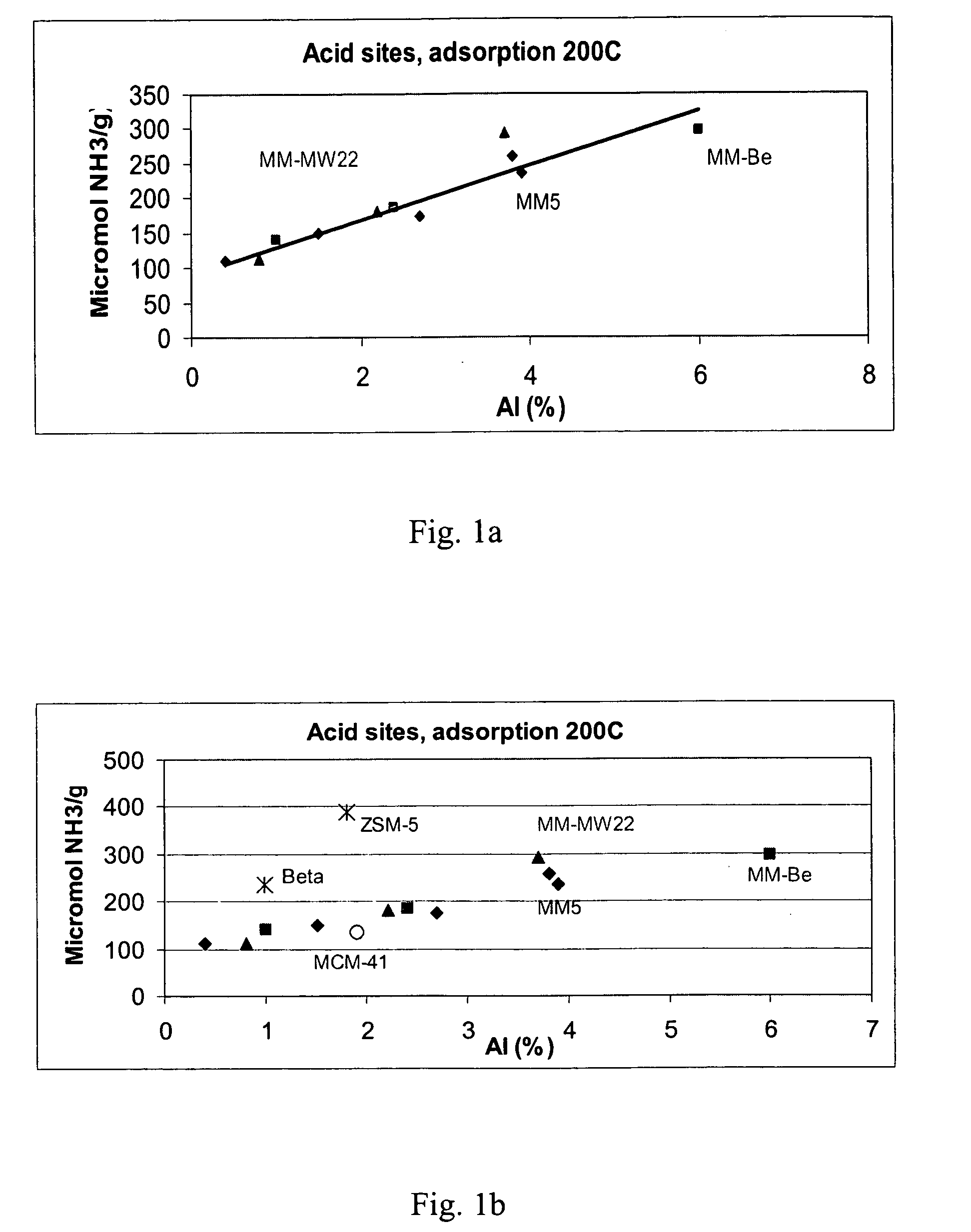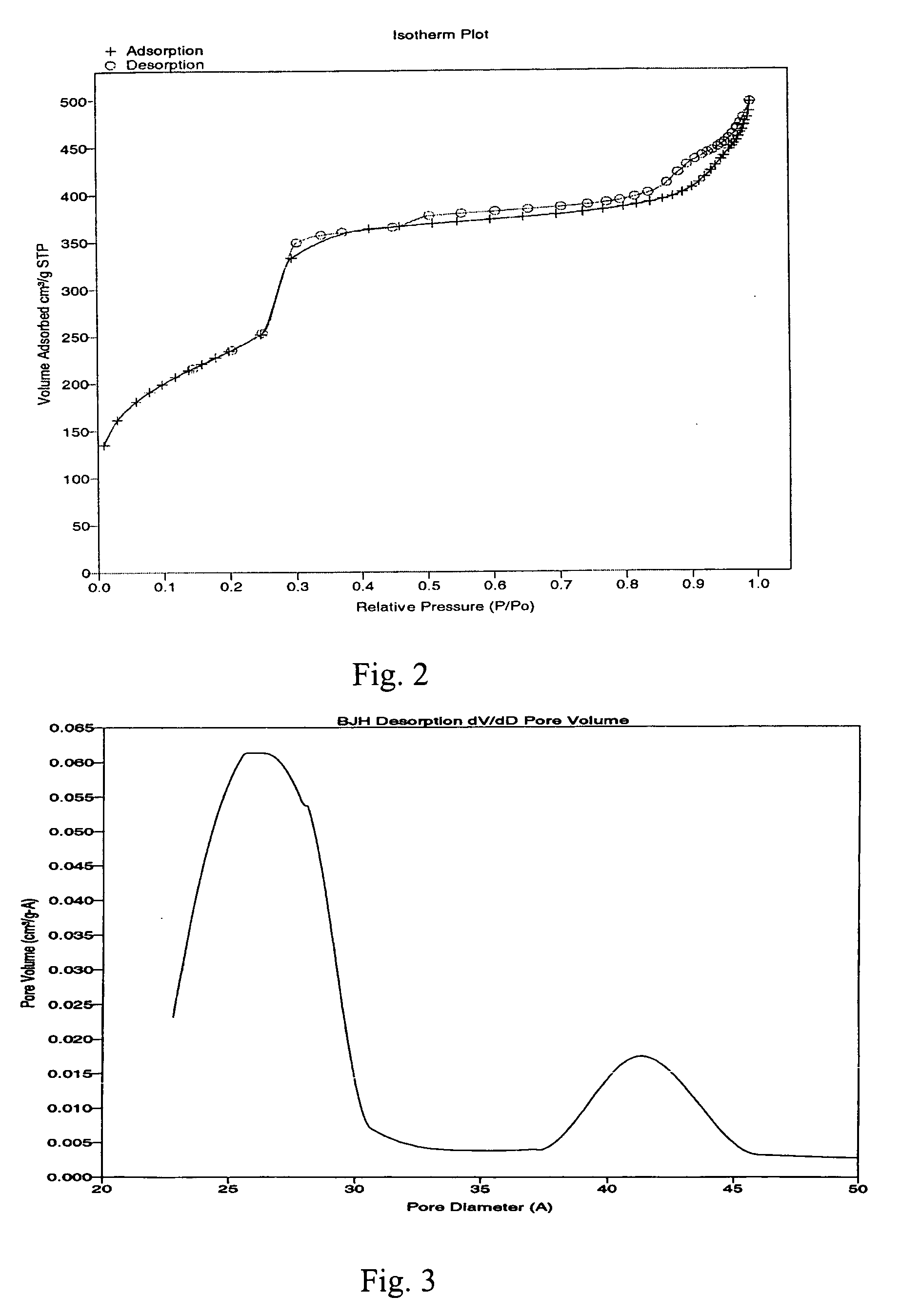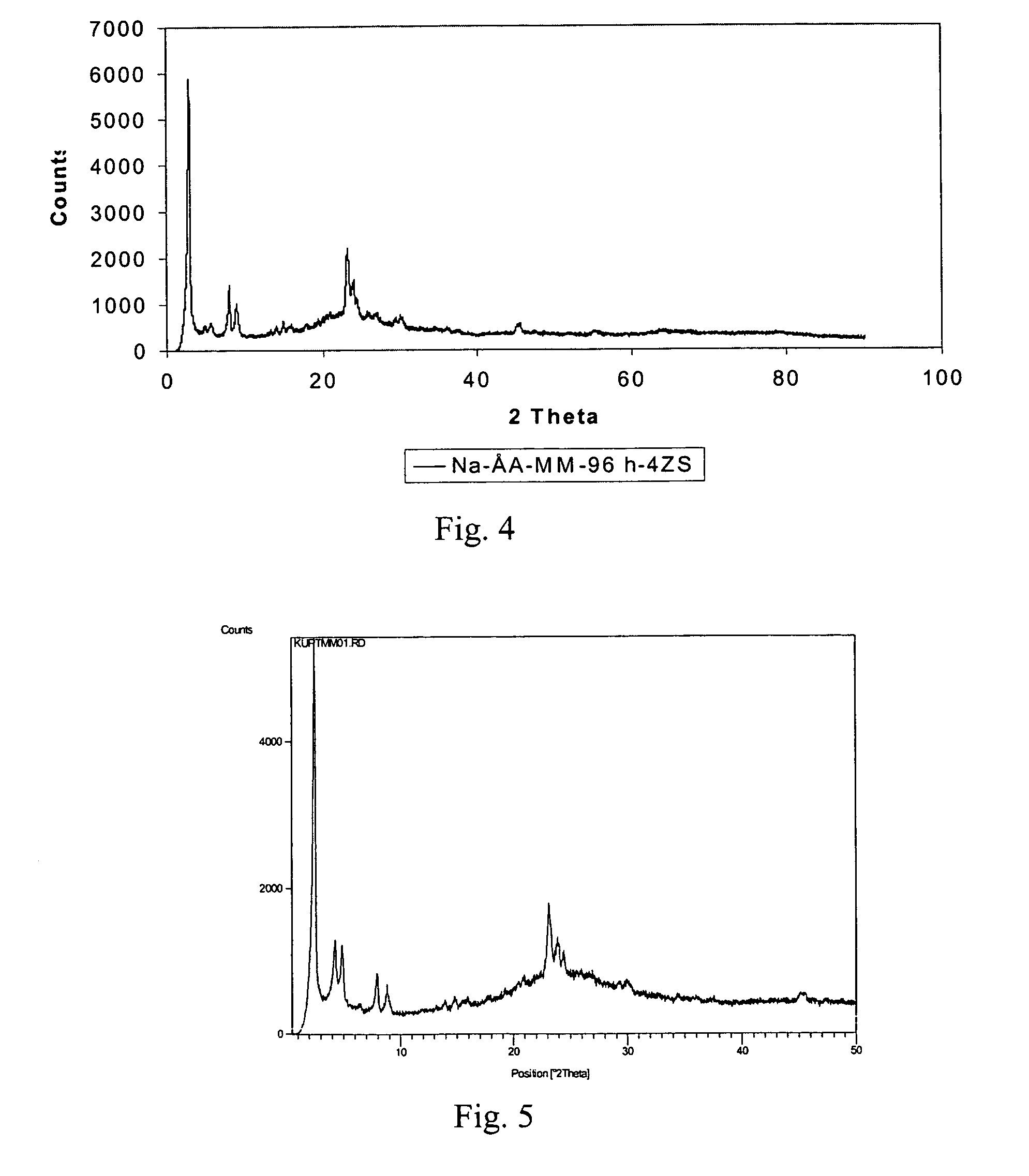Catalytic materials and method for the preparation thereof
- Summary
- Abstract
- Description
- Claims
- Application Information
AI Technical Summary
Benefits of technology
Problems solved by technology
Method used
Image
Examples
examples 2-4 (comparative)
Manufacture of MSA Type Materials According to EP 0 784 652
[0121] The starting materials used in the synthesis of MSA type materials were aluminium isopropoxide (Al-i-C3H7O)3, tetraethyl orthosilicate (Si(C2H5O)4) and aqueous solution of tetrapropyl ammonium hydroxide (TPA-OH).
[0122] TPA-OH, (Al-i-C3H7O)3 and water were mixed at 60° C. for 40 minutes. The obtained solution was heated to 85° C. and a clear solution was formed. Then liquid Si(C2H5O)4 was added via a drop funnel. The obtained mixture was stirred for 3 hours. The reaction mixture was cooled under continuous stirring for 20 hours. After cooling the formed alcohol and water was evaporated and the solid gel was dried at 100° C. The dry solid was milled and calcined at 550° C. for 8 hours.
[0123] In the following table 3 the preparation and properties of the obtained MSA type catalysts are provided.
TABLE 3Example 2Example 3Example 4MSA-1MSA-2MSA-3Synthesis parameters:Si / Al (mol / mol)50125TPA-OH / Water (mol / mol)0.180.180....
examples 6-8
Mesoporous Molecular Sieve Embedded with MFI Zeolite Structure
Preparation of the MFI Zeolite Nuclei
[0126] Three different solutions A, B and C were made for MFI zeolite nuclei preparation. Solution A was prepared by adding 10.5 g of fumed silica to 81.2 ml of distilled water. Solution B was prepared by dissolving 2.2 g of NaOH and 0.3 g of Al(OH)3 in 9.4 ml of distilled water. Solution B was added to Solution A and the obtained gel mixture stirred for 20 minutes. Solution C was prepared by dissolving 3.7 g of tetrapropyl ammonium bromide in 3.8 ml of water and stirring for 20 minutes. Solution C was added to the gel mixture (A+B) and stirred for 15 minutes and 55 ml of water was added. The obtained gel mixture was further stirred for 20 minutes. Synthesis was carried out at 150° C. for 18 h. After the completion of synthesis the product was filtered, washed with distilled water, dried and calcined and MFI zeolite nuclei were obtained.
example 6a
Synthesis of Mesoporous Molecular Sieve Embedded with MFI Structure, Na-MM5-96h-4ZS, without Aluminium Source
[0127] The synthesis of Na-MM5-96h-4ZS was carried out by preparing solutions A, B and C. Solution A was prepared by mixing 8.3 g of fumed silica with 51.7 g of distilled water with continuous stirring (r.m.p. 196) for 20 minutes. Solution B was prepared by adding 18.1 g of tetramethyl ammonium silicate to 11.7 g of sodium silicate with continuous stirring (r.m.p 180) and the mixture was stirred for 20 minutes. Solution C was prepared by dissolving 26.3 g of tetradecyltrimethyl ammonium bromide in 174.3 g of distilled water with vigorous stirring (r.m.p. 336) for 20 minutes. Solution B was added to Solution A slowly (in 15 min) with vigorous stirring (r.m.p. 320) and after the addition of solution B the mixture was stirred for further 20 min. Solution C was added to the mixture (A+B) slowly (20 min) with vigorous stirring (r.m.p. 336) and after the addition of solution C th...
PUM
| Property | Measurement | Unit |
|---|---|---|
| Temperature | aaaaa | aaaaa |
| Temperature | aaaaa | aaaaa |
| Temperature | aaaaa | aaaaa |
Abstract
Description
Claims
Application Information
 Login to View More
Login to View More - R&D
- Intellectual Property
- Life Sciences
- Materials
- Tech Scout
- Unparalleled Data Quality
- Higher Quality Content
- 60% Fewer Hallucinations
Browse by: Latest US Patents, China's latest patents, Technical Efficacy Thesaurus, Application Domain, Technology Topic, Popular Technical Reports.
© 2025 PatSnap. All rights reserved.Legal|Privacy policy|Modern Slavery Act Transparency Statement|Sitemap|About US| Contact US: help@patsnap.com



